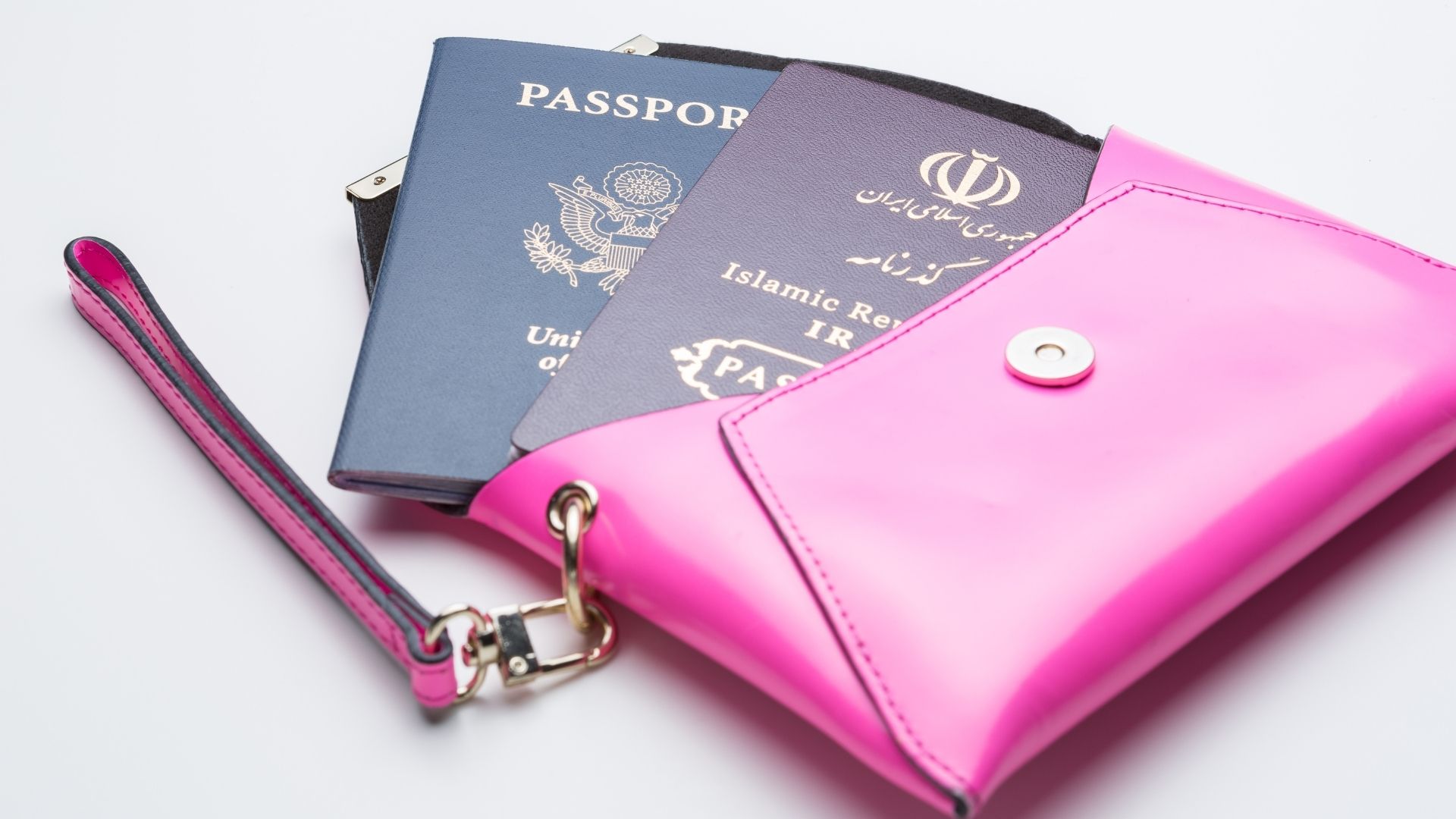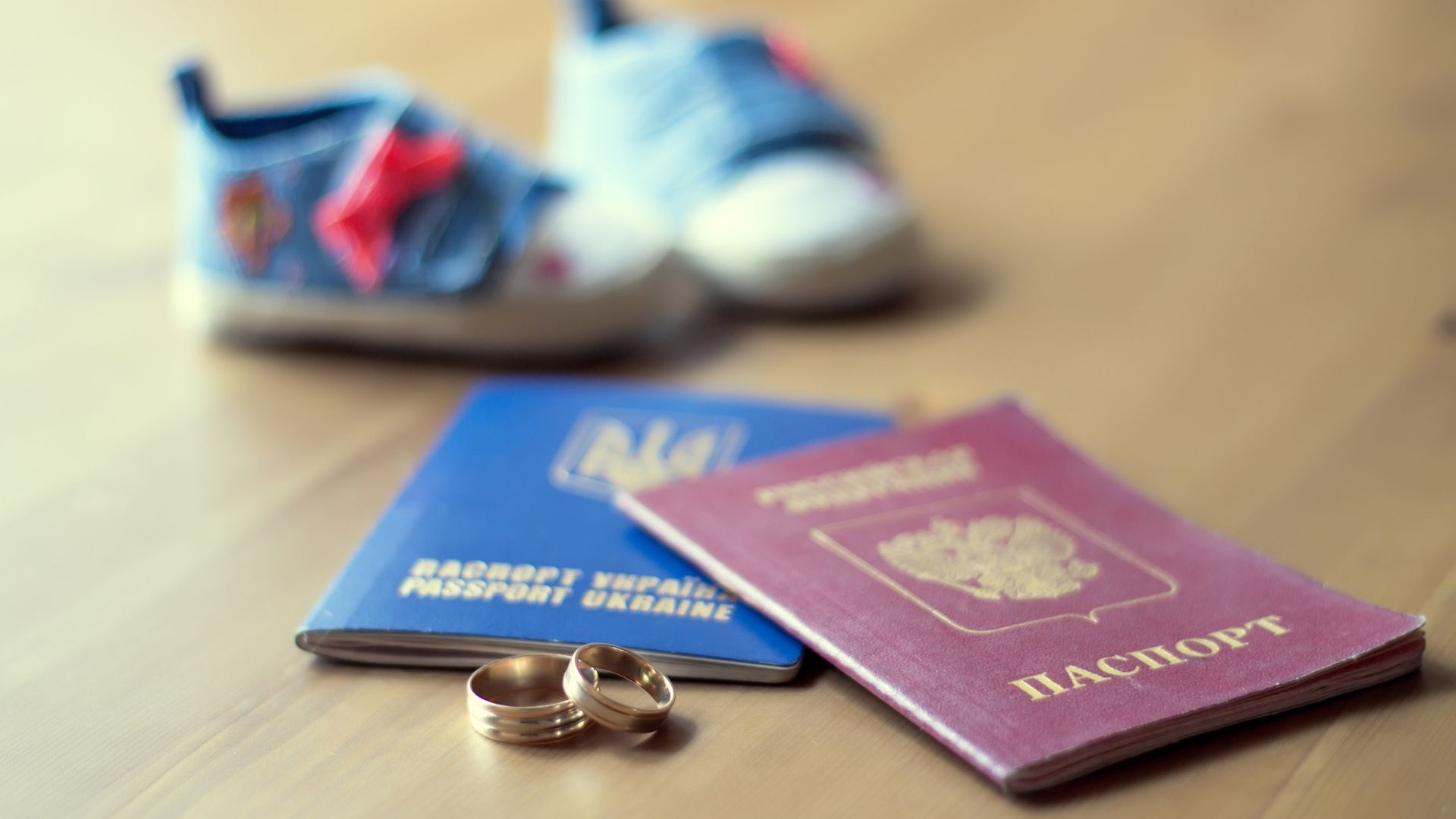At any major airport, you can spot them if you know what to look for: the travelers who move through border control with quiet confidence, no visible tension, no stack of forms. One passport goes down on the counter; another one stays tucked away. A few keystrokes later, a nod from the officer — and they’re gone before you’ve even reached the front of the line.
It’s not luck. It’s a legal quirk of modern nationality.
Around the world, millions of people hold dual citizenship, and a growing number are learning how to navigate borders with the subtle privileges that come with it — faster entries, fewer questions, and in some cases, complete discretion about which country they “belong” to at any given moment.
This quiet advantage is what travelers have begun calling the “hidden border loophole.” It’s not shady or secret. It’s just a blind spot built into the system — one that most single-passport travelers don’t even realize exists.

Two Citizenships, Two Identities — One Smooth Arrival
The rules of international travel were designed for people with one nationality. You leave on a passport; you return on it. The system assumes that you have a single allegiance and a single legal identity.
Dual citizens break that model.
Let’s say you were born in the U.S. but have Italian citizenship through family heritage. When you fly to Europe, you check in using your American passport — the one your airline ticket matches — but the moment you land in Rome, you switch. At immigration, you present your Italian passport.
To the Italian officer, you’re home. No visa check, no arrival stamp, no lecture about length of stay. To the airline, you’re an American tourist.
Two systems, two stories — both completely legitimate.
You’ve just slipped through an invisible gap in global bureaucracy: the border that changes depending on which document you show.
The Legal Fine Print That Creates the Loophole
Every country defines citizenship differently. Some recognize dual nationality; others technically prohibit it but tolerate it in practice. The United States, for example, doesn’t encourage dual citizenship but doesn’t forbid it. European countries like France, Ireland, and Italy actively allow it.
Here’s the legal crux: each country considers you exclusively theirs when you’re within its borders.
That means:
- When you enter the U.S. on a U.S. passport, you’re American — and only American.
- When you enter France on a French passport, you’re French — and only French.
The system doesn’t merge those identities; it alternates them.
That alternating status — switching which “you” is legally present — is what creates the travel fluidity dual citizens enjoy. It’s not an exploit; it’s a byproduct of sovereignty.
Why It Feels Like a Loophole
Most border systems are built to flag foreign visitors — to check visas, return tickets, and length of stay. But citizens pass through much lighter screening.
Dual citizens can choose which version of themselves fits best for the trip:
- Entering Europe as an EU citizen avoids 90-day Schengen limits.
- Returning to the U.S. as an American avoids customs declarations and entry interviews.
- Traveling between Commonwealth countries on a British passport can unlock shorter lines and fewer import checks.
You’re not hiding anything; you’re simply selecting which legal doorway you walk through.
That freedom — the ability to move without being “foreign” anywhere — feels like magic in an era when most travelers are fingerprinted, photographed, and timed.
The Unwritten Etiquette of the Dual-Passport Traveler
If there’s a social code for this world, it’s built on discretion.
- Always use the correct passport at each border. Airlines and immigration databases link your travel records to your entry document. Mixing them mid-journey confuses systems and can trigger delays.
- Never show both unless asked. Border officers expect one clear national identity at a time. Offering both can sound like you’re trying to negotiate rules.
- Declare truthfully when required. Taxes, residency, and military obligations can still apply. Dual nationality doesn’t exempt you from law — it just changes whose law applies where.
- Keep your documents synced. Mismatched expiration dates or name spellings create chaos at check-in.
- Don’t brag about it. Nothing irritates a line of weary travelers more than someone explaining they “don’t need visas.”
The dual citizen’s golden rule: move quietly, not cleverly.
Where It Matters Most
Certain borders reveal just how powerful dual citizenship can be.
1. The U.S. and the European Union
An American-EU dual national can travel between the two regions indefinitely — no ESTA renewals, no Schengen countdown. Enter the EU as European, the U.S. as American. You effectively erase transatlantic visa limits.
2. The U.K. and the Commonwealth
British-Canadian or British-Australian travelers often use their passports interchangeably for work and long stays. Commonwealth reciprocity still greases bureaucratic wheels — old empire, modern convenience.
3. Latin America
Regional pacts like Mercosur allow citizens of member states to live and work freely across borders. A dual Argentine-Italian citizen, for instance, can enter South America as local, Europe as EU — global mobility squared.
4. The Caribbean and the U.S./U.K.
Many island nations offer citizenship by descent or investment. Holders often use these second passports for visa-free access while retaining U.S. or British entry rights. It’s not avoidance; it’s optimization.
The Gray Area: When Borders Disagree
The convenience of dual nationality comes with a paradox: no single authority sees the full picture.
Databases don’t always connect. If you enter one country as a citizen and leave another as a foreigner, travel histories can appear mismatched. That’s why seasoned dual citizens are meticulous about departure stamps and airline manifests.
There are also complications when the two countries’ laws conflict — for example:
- One taxes citizens globally (like the U.S.), the other doesn’t.
- One requires exit permits or military service.
- One doesn’t recognize the other’s passport at all.
In those rare cases, your “loophole” closes fast. The safest approach is full transparency when required and quiet efficiency when not.
The Psychology of Dual Belonging
Ask frequent dual-passport travelers what it feels like to switch identities mid-journey, and you’ll get philosophical answers.
“It’s like being two people who share one itinerary,” one woman with U.S.-Irish citizenship told me. “When I’m in Dublin, I’m home. When I land in New York, I’m home again. The plane is the only neutral space.”
That fluidity — belonging to multiple legal systems and cultures — breeds a kind of travel calm. There’s less anxiety at checkpoints, less sense of being “judged.”
But it also raises subtle questions: Which country do you represent when you travel abroad? Whose embassy do you call in an emergency? Dual nationality isn’t just a perk; it’s a relationship management exercise between governments.
Why This Loophole Is Growing
Global mobility has changed dramatically in the past two decades. Birthright citizenship, ancestry laws, and “golden visa” programs have multiplied. Today, over 5% of Americans and 10% of Europeans hold or qualify for dual nationality.
Technology has made border systems smarter — but not yet unified. Immigration databases rarely share across jurisdictions. That fragmentation means every passport you hold is a separate digital identity.
So while most travelers experience stricter surveillance, dual citizens are quietly benefiting from the system’s disconnection. They’re the exception that the global security model can’t fully synchronize.
How Governments Are Responding
Governments aren’t blind to this phenomenon. Some are tightening exit controls or requiring citizens to use national passports exclusively when entering or leaving home territory.
The U.S., for instance, mandates that American citizens — even dual nationals — must use their U.S. passport to enter and leave the country. Australia and Canada do the same.
Others, like the European Union, have leaned into it, streamlining border control for citizens regardless of secondary nationality. The new ETIAS system launching soon will track foreign visitors, not citizens — which means EU dual nationals glide right through.
The “loophole” remains because no one has an incentive to close it. It benefits travelers, economies, and airlines alike.
Why Some Call It a Superpower
If travel is freedom, dual citizenship is the ultimate upgrade.
It unlocks visa-free entry to dozens more countries, shortens customs lines, and protects against travel bans or geopolitical surprises. In crises — pandemics, wars, sanctions — it can literally determine which borders stay open to you.
During COVID-19 lockdowns, dual citizens were among the few who could cross otherwise sealed frontiers. One passport got them home; the other got them out again.
No wonder entire industries now exist to help people reclaim ancestral citizenships — Italian through grandparents, Irish through lineage, Portuguese through Sephardic heritage.
What was once a sentimental link to heritage has become a practical survival tool in an unpredictable world.
The Ethics of Advantage
Of course, privilege comes with perspective.
Dual citizenship is still an option largely available to those with ancestral ties or financial means. For millions of migrants and refugees, borders remain walls, not gateways.
But the conversation around the “border loophole” reveals something deeper: that identity and mobility are increasingly negotiable. The old idea of belonging to one country is fading. The modern traveler belongs to many — or to none completely.
The challenge for policymakers isn’t stopping that; it’s adapting to it.
The Future Border: Fluid, Not Fixed
Experts predict that within a decade, borders will rely less on passports and more on biometric identity — fingerprints, facial recognition, digital travel IDs stored on phones.
Will that end the dual-passport advantage? Possibly. But until databases unify, human systems will always have gaps — and travelers who understand them will always move more freely than those who don’t.
One thing is certain: the idea of nationality as a fixed, singular state is already outdated. The modern border is no longer a line. It’s a choice.

Final Thought: The Freedom to Belong Twice
The “hidden border loophole” isn’t really hidden. It’s just invisible to those who live with one flag.
For dual citizens, it’s a daily reminder that nationality isn’t destiny — it’s a tool. Used wisely, it opens doors without bending rules. Used arrogantly, it invites scrutiny.
So the next time you see someone breeze through customs while you shuffle your paperwork, remember: you’re watching two legal systems overlap for a few quiet seconds before the gate closes again.
It’s not magic. It’s paperwork — perfectly played.
- 5 Credit Card Tricks That Get You Free Domestic and International Flights Instantly - November 7, 2025
- The 10 Secrets to Finding Luxury Stays in Spain for Hostel Prices - November 7, 2025
- Cheap Ways to Eat Like a Local Without Looking Like a Tourist - November 7, 2025




